What’s a SEER Rating? A Guide to Energy Efficient HVAC Systems
For most people, energy efficiency and cost savings are primary concerns when purchasing a new heating and cooling system. But we often hear from customers who, after purchasing a new system, wonder why it seems to run longer than the old system they replaced. It only stands to reason that the longer your system runs, the more it costs to operate, right? Not necessarily. In fact, with the technology built in to today’s high-efficiency Carrier units, running more may actually cost you less. Here’s everything you need to know about energy efficient HVAC systems.
What’s a SEER Rating?
As you research the countless options of which unit to buy, you will likely come across many industry-standard efficiency rating systems, codes and terms. While this can be confusing, the most important thing to remember is the higher the number, the higher the efficiency – and the lower your long-term operating costs will be.
One of the more common standards for energy efficient HVAC systems is the SEER, or Seasonal Energy Efficiency Ratio. This is the measure of efficiency used to rate the cooling process of air conditioner and heat pump systems. The higher the SEER, the greater the efficiency and savings.
In January 2015, the U.S. Department of Energy enacted new minimum efficiency rating guidelines, which state all new products must have a 13 SEER or higher. Newer guidelines, which will go into effect in 2023, require residential systems in the Southeast to have a minimum required SEER of 15. At Barineau, we offer systems that can achieve SEER ratings higher than 20.
Oh, the Humidity!
When it comes to keeping our homes and offices comfortable, Florida humidity is just as big an enemy as the temperature. In fact, a vital part of the air conditioning process is removing the moisture from the air. That means it’s just as important to control the humidity as it is to lower the temperature when things get hot.
Some experts advise that the relative humidity in your home should be somewhere between 45 and 55 percent. Once it goes above that threshold, the air becomes uncomfortable (and can have a negative impact on the air quality in your home). Dust mites, bacteria, fungi and even viruses can thrive in your home when the air is too damp. Sign of excess moisture in your home may include:
- Foggy windows
- Mildew or musty odors
- Damp surfaces
- Dark spots or discoloration
If your home just feels damp and sticky, that can be warning sign that your home is too humid – even without these other symptoms.
Keeping Cool with Barineau Heating and Air Conditioning
So how does all this add up to running more and costing less? Today’s higher SEER units are designed to run longer to maintain temperature and humidity levels – but, they run at lower speeds and use less energy. It is more efficient to maintain the correct levels than to constantly drop below those levels and ask your unit to work harder to regain them.
If your air conditioner is at least 10 years old or has a low SEER rating, it may be time to talk to Barineau Heating and Air Conditioning about potential energy savings and increased comfort with an energy efficient HVAC system. Click here to contact us online or call 850.580.4029 to speak with a home comfort specialist today.




